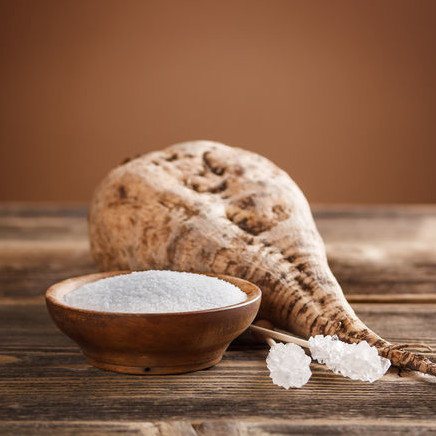Discover the Uses and Perks of Beet Sugar Vs Cane Sugar in Your Daily Diet
Discovering the distinct high qualities of beet and cane sugar reveals even more than just their sweetening abilities; it highlights their unique influence on wellness and cookeries. Beet sugar, recognized for its subtle taste, is typically favored in delicate treats, whereas cane sugar, with its tip of molasses, adds splendor to robust meals. Each kind holds its very own nutritional account and glycemic effects, inviting a deeper understanding of their duties in a balanced diet plan and lasting consumption methods.
Beginning and Production Procedures of Beet and Cane Sugar
The distinct climates and soil kinds needed for expanding sugar beets and sugarcane add to differences in their farming methods and geographical circulation, influencing the economics and sustainability of their production. beet sugar vs cane sugar.
Nutritional Contrast In Between Beet Sugar and Cane Sugar
Regardless of stemming from different plants, beet sugar and cane sugar are nutritionally extremely comparable, both mainly consisting of sucrose. Each supplies about 4 calories per gram, converting to roughly 16 calories per teaspoon. Structurally, both sugars are composed of about 99.95% sucrose, with very little quantities of various other substances like moisture and trace element, which do not dramatically alter their dietary accounts.

Eventually, when selecting between beet sugar and cane sugar based visit our website upon More Info nutritional content alone, both offer the same advantages and drawbacks as they are basically forms of the exact same particle-- sucrose, giving fast energy without various other nutrients.
Influence On Wellness: Glycemic Index and Caloric Content
Exploring additionally right into the effects of beet sugar and cane sugar on health and wellness, it is vital to consider their glycemic index and caloric material. The glycemic index (GI) of both beet and cane sugar is around 65, classifying them as high-GI foods, which can trigger quick spikes in blood sugar levels.
Each sort of sugar includes around 4 calories per gram, making their calorie content equivalent. For those monitoring calorie intake, especially when taking care of weight or metabolic wellness conditions, comprehending this equivalence is important (beet sugar vs cane sugar). Too much click for more usage of any kind of high-calorie, high-GI food can add to wellness problems such as excessive weight, heart disease, and insulin resistance.
Environmental and Economic Factors To Consider of Sugar Manufacturing
Beyond wellness impacts, the manufacturing of beet and cane sugar also elevates substantial environmental and financial worries. Sugar beet growing often tends to require cooler environments and has a lower geographical footprint compared to sugar cane, which thrives in tropical areas. Nonetheless, both crops are extensive in terms of water usage and land profession, potentially leading to deforestation and water scarcity. Financially, the global sugar market is extremely unpredictable, affected by changes in international trade policies and aids. Many countries incentivize sugar manufacturing with financial support, skewing market value and affecting small-scale farmers adversely.
Furthermore, making use of chemicals and plant foods in both beet and cane sugar farming can result in soil degradation and contamination, further influencing biodiversity and local water bodies (beet sugar vs cane sugar). The option in between cultivating sugar beet or cane frequently depends upon neighborhood environmental conditions and financial aspects, making the sustainability of sugar manufacturing an intricate concern
Culinary Applications and Flavor Differences
While the ecological and financial elements of sugar manufacturing are undoubtedly substantial, the choice in between beet and cane sugar also influences culinary applications and taste accounts. Beet sugar, obtained from the sugar beet plant, is understood for its incredibly neutral preference.
Walking stick sugar, removed from sugarcane, commonly retains molasses traces, which pass on an unique splendor and depth. The mild variant in moisture content in between beet and cane sugar can influence the texture and uniformity of dishes, making cane sugar a recommended selection for details recipes that profit from its special buildings.

Final Thought
In conclusion, both beet and cane sugar have distinct origins and production processes, offering similar nutritional accounts with mild differences in salt web content and taste. While their effect on wellness, particularly relating to glycemic index and calories, is comparable, the selection in between them usually steams down to environmental, economic aspects, and details cooking needs. Understanding these aspects can lead customers in making informed decisions that line up with their health and wellness goals and flavor choices.